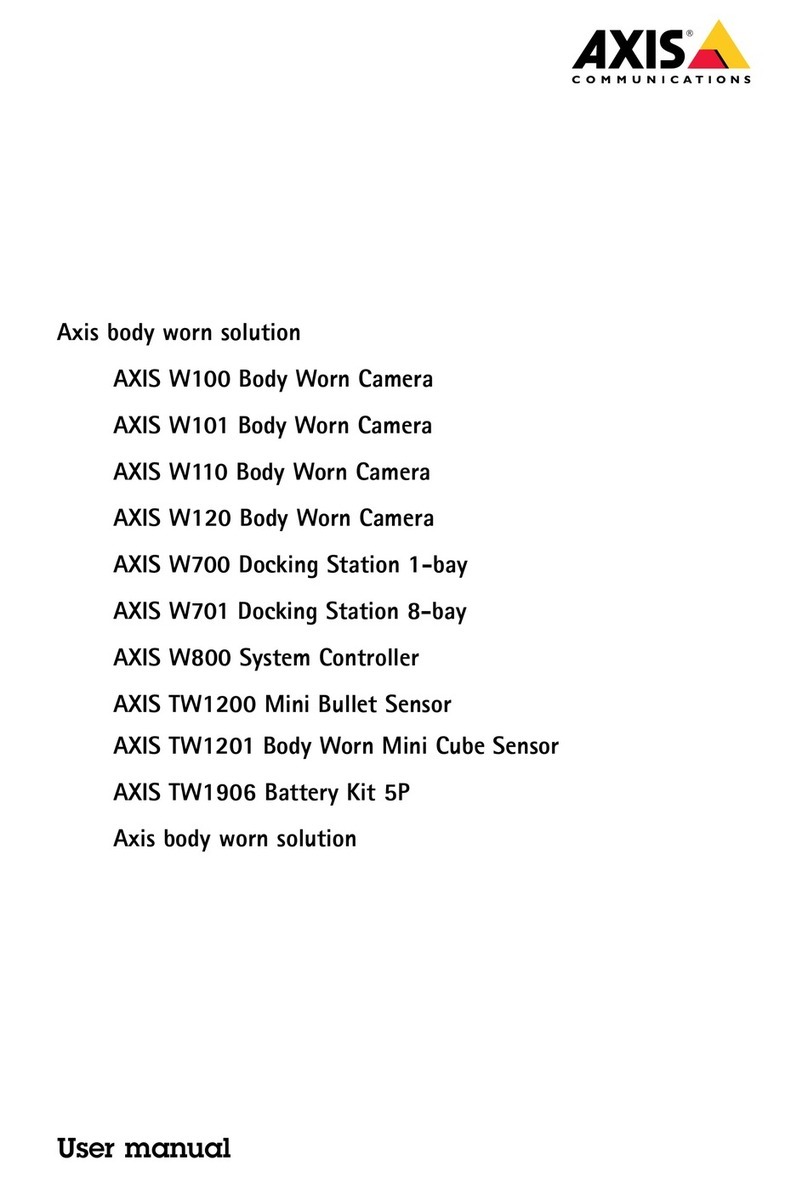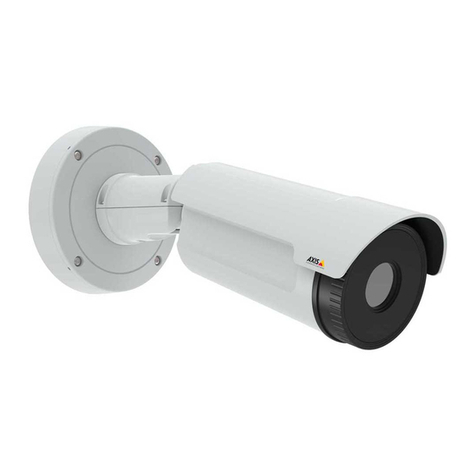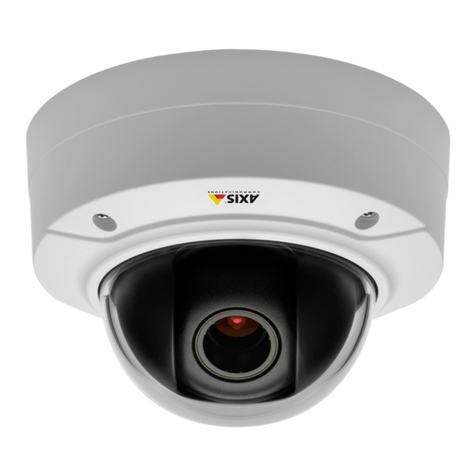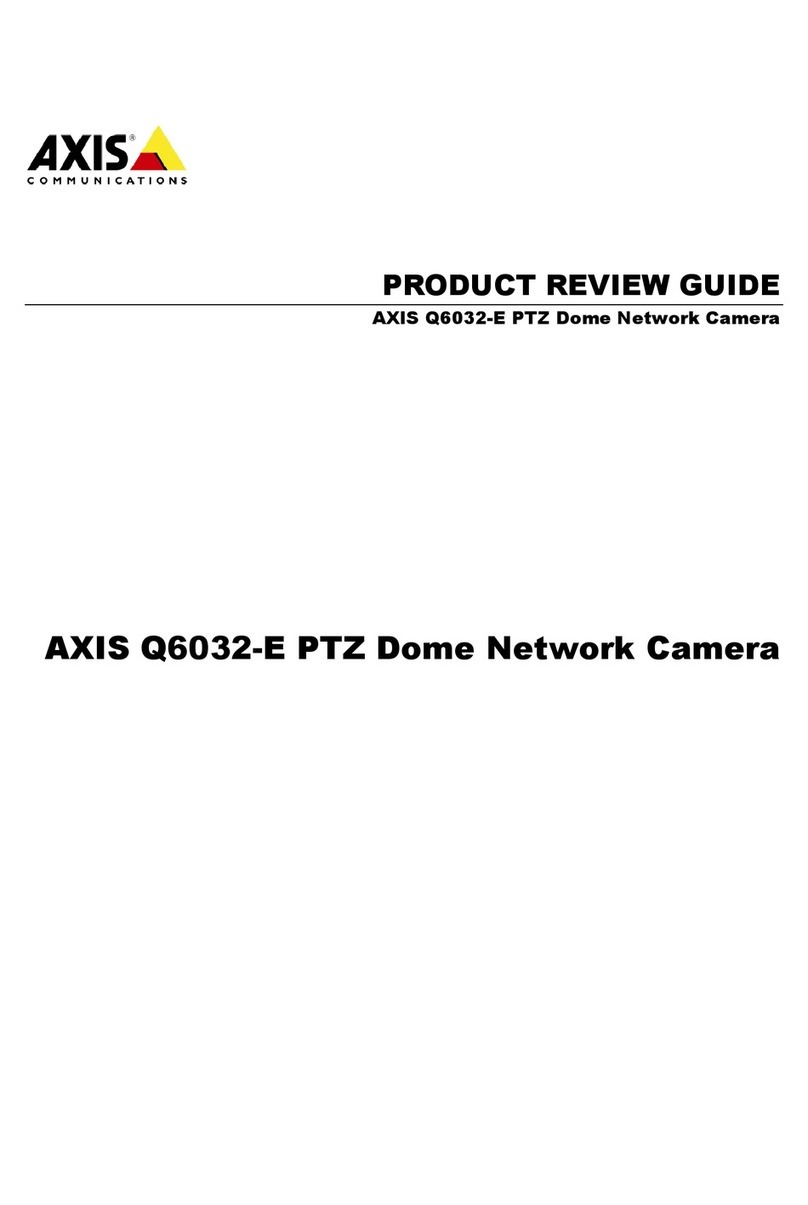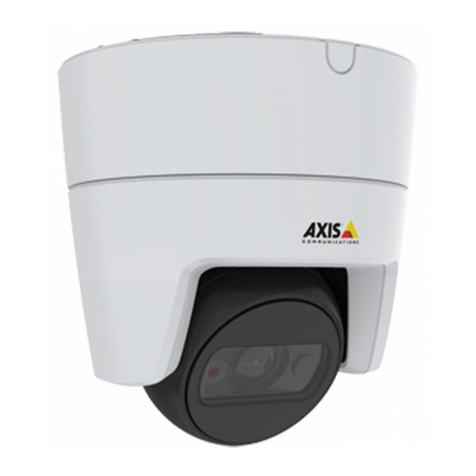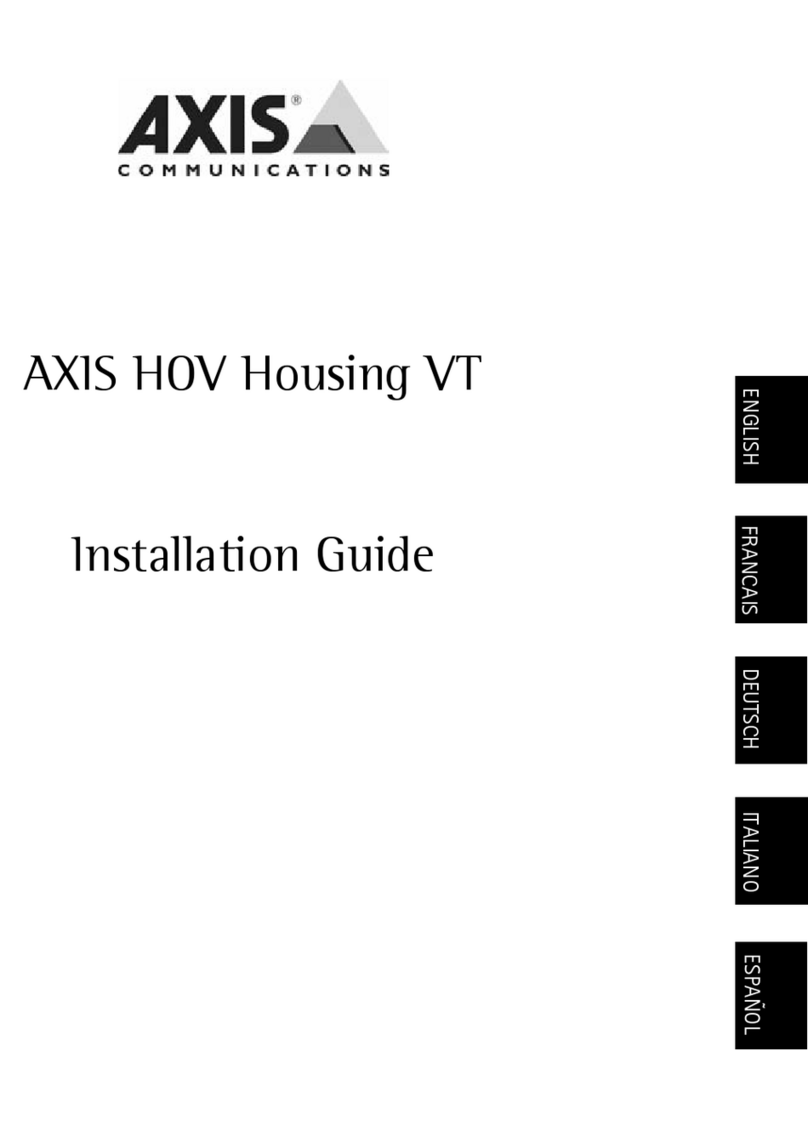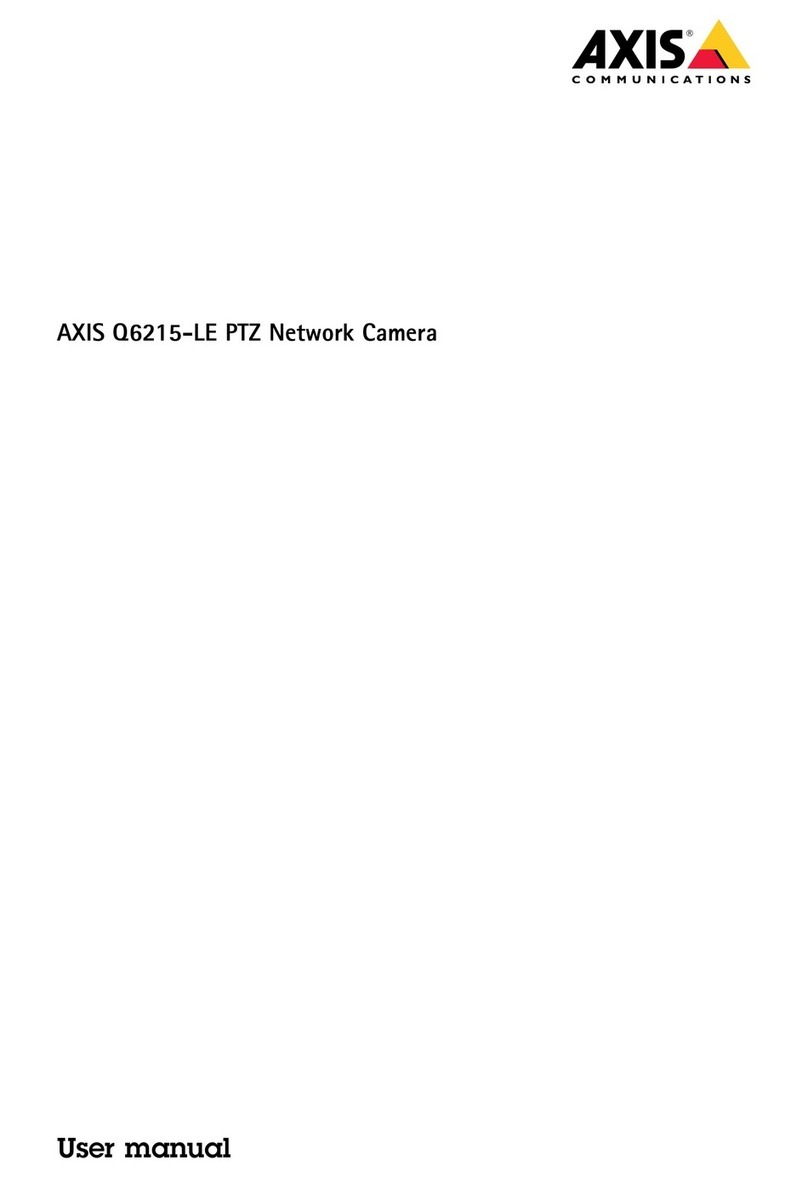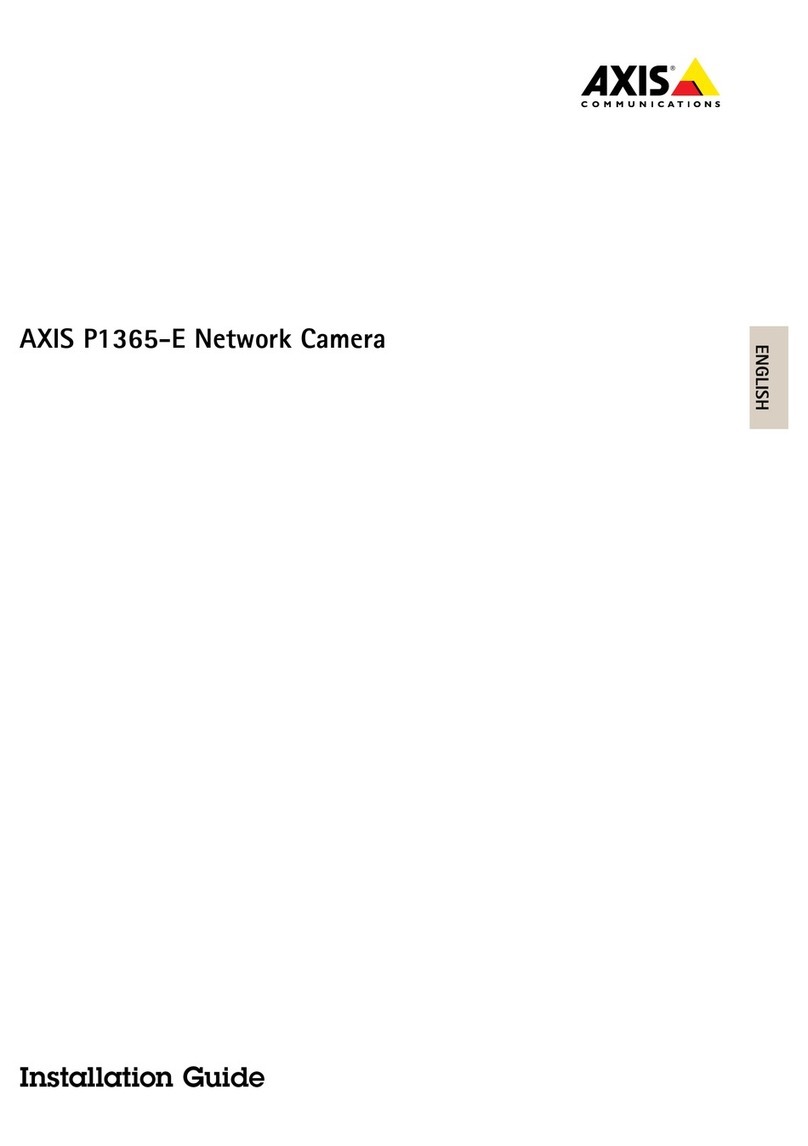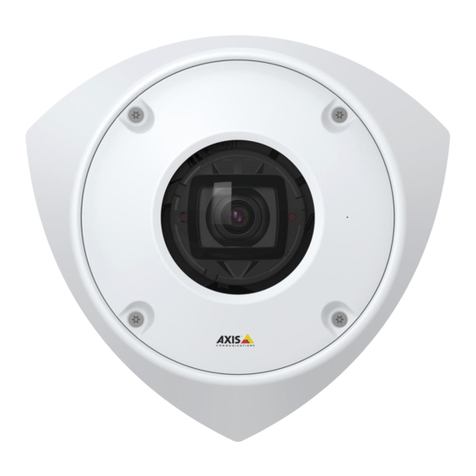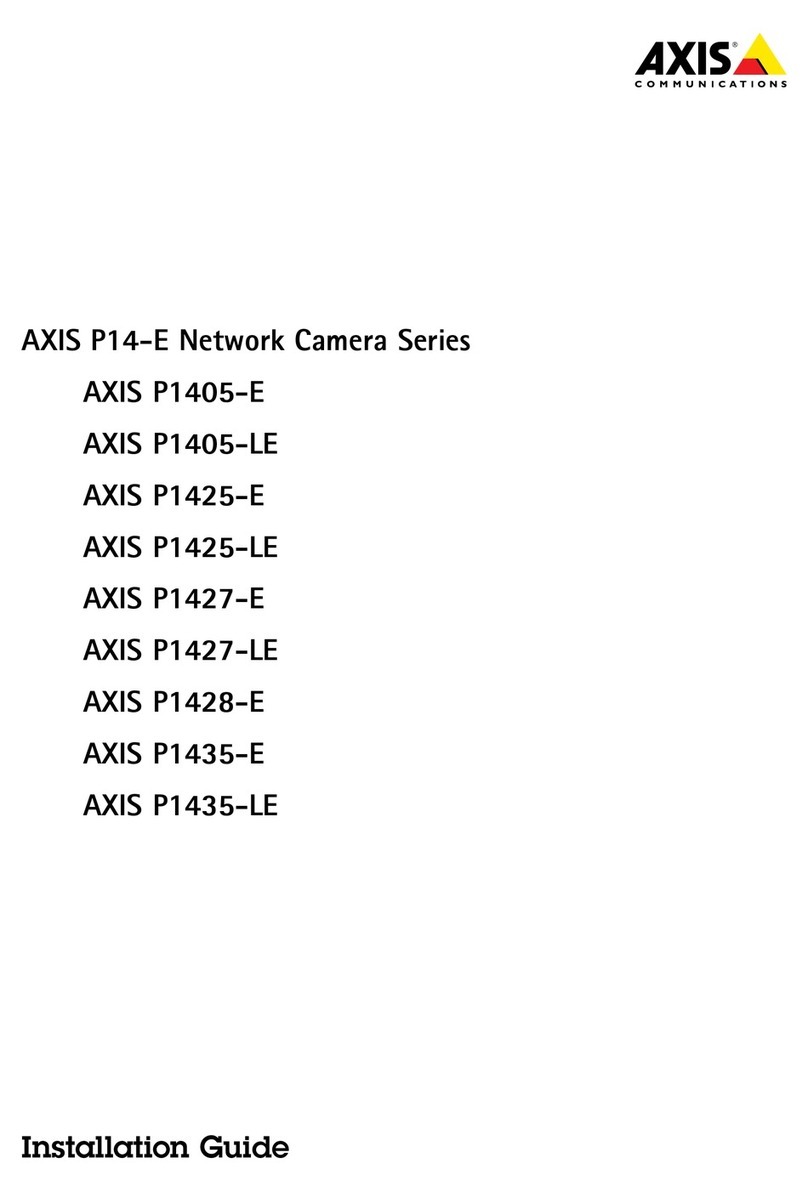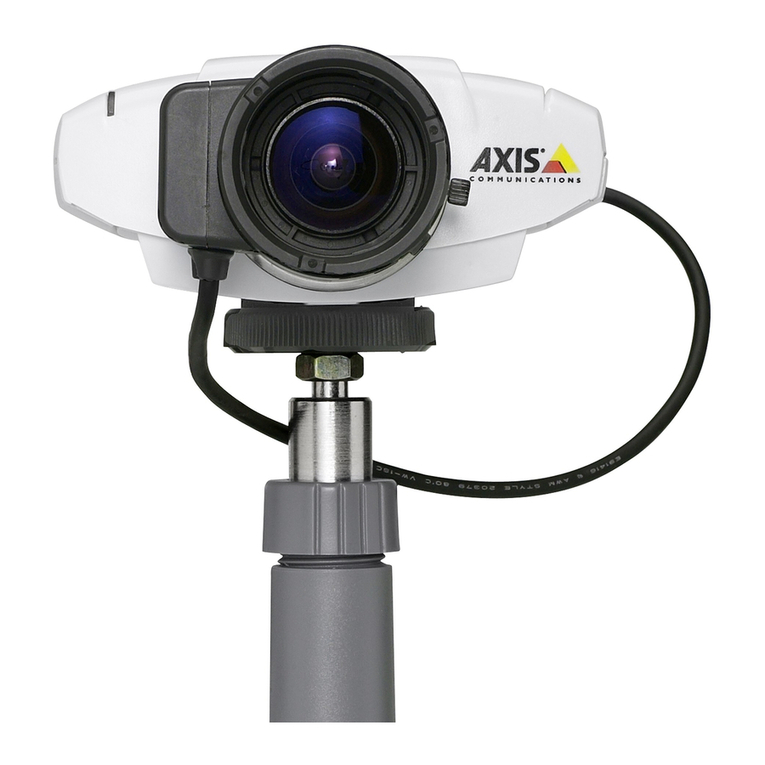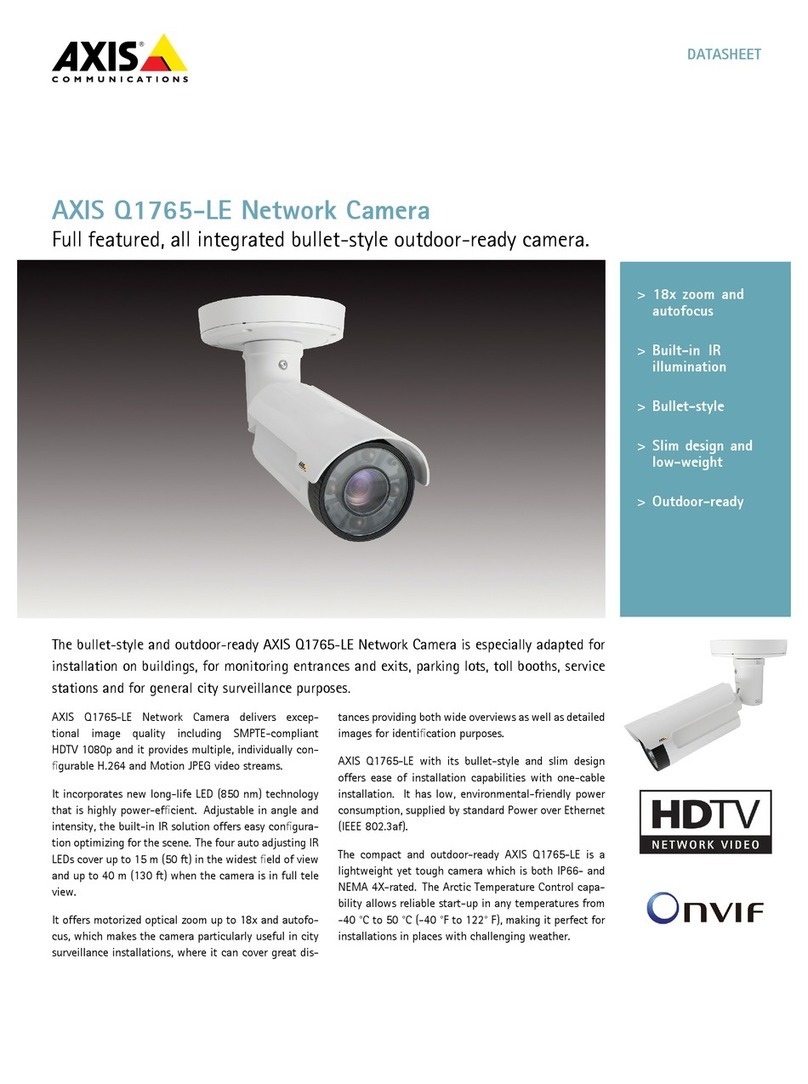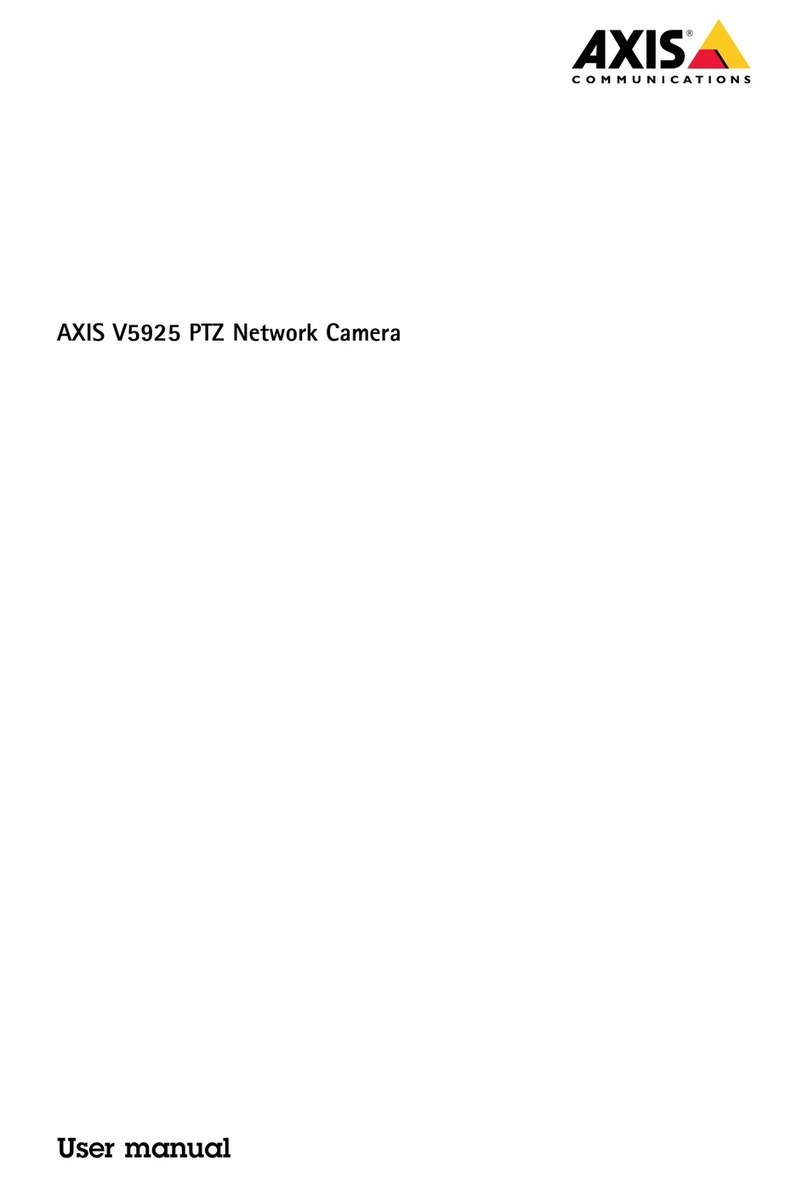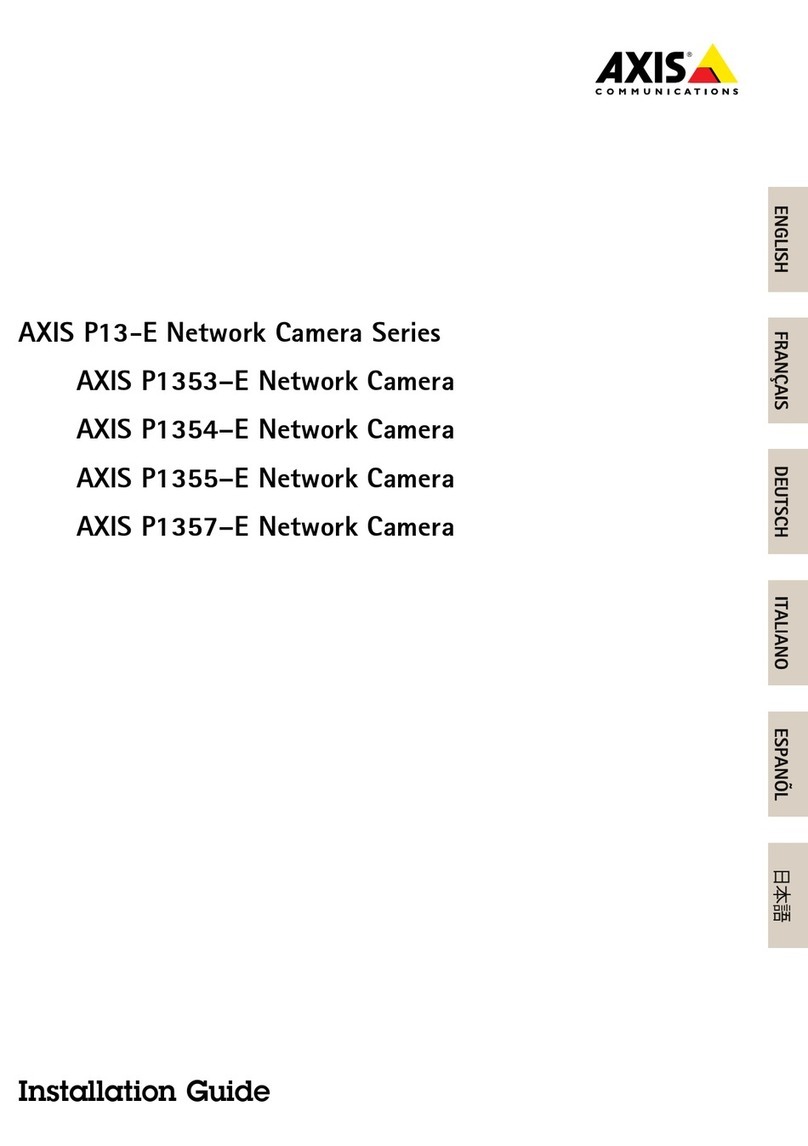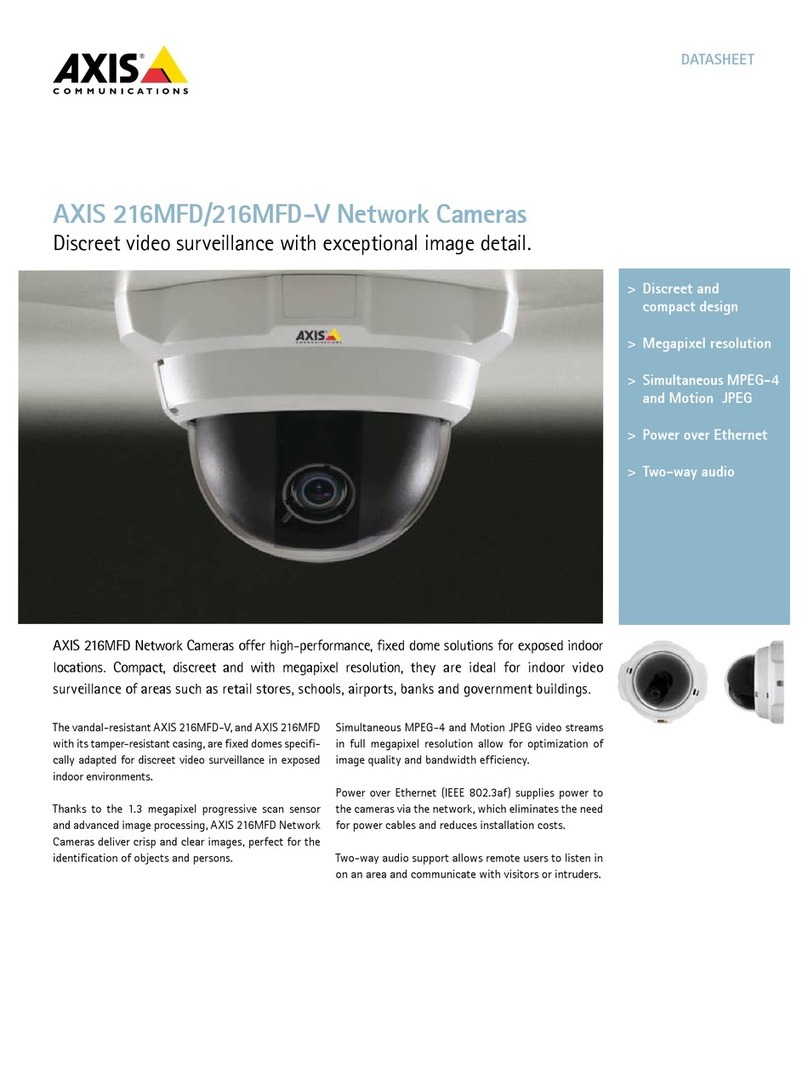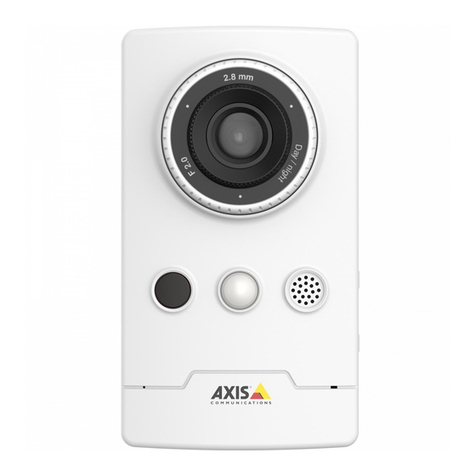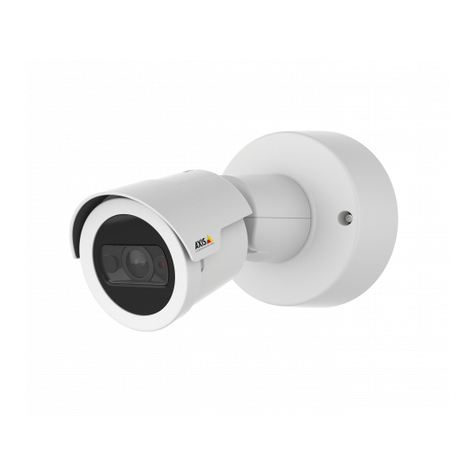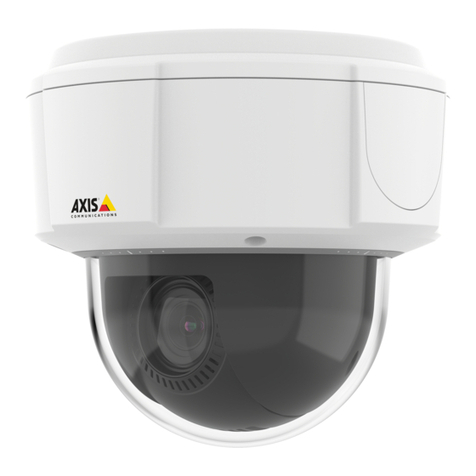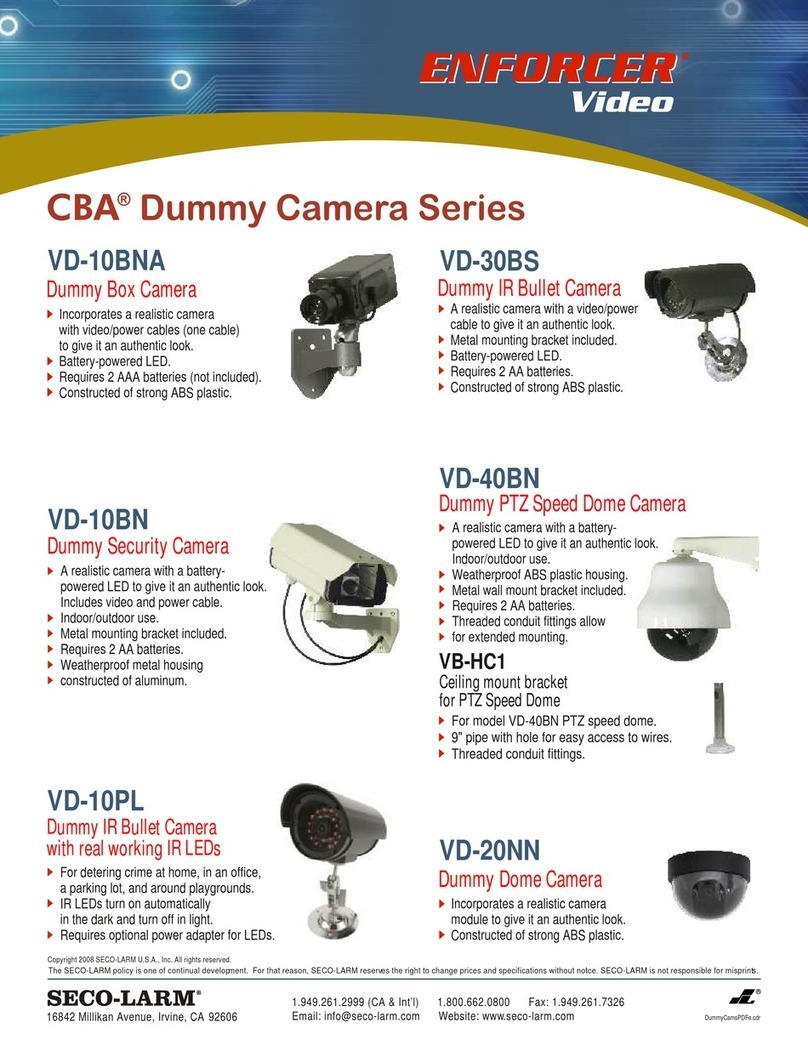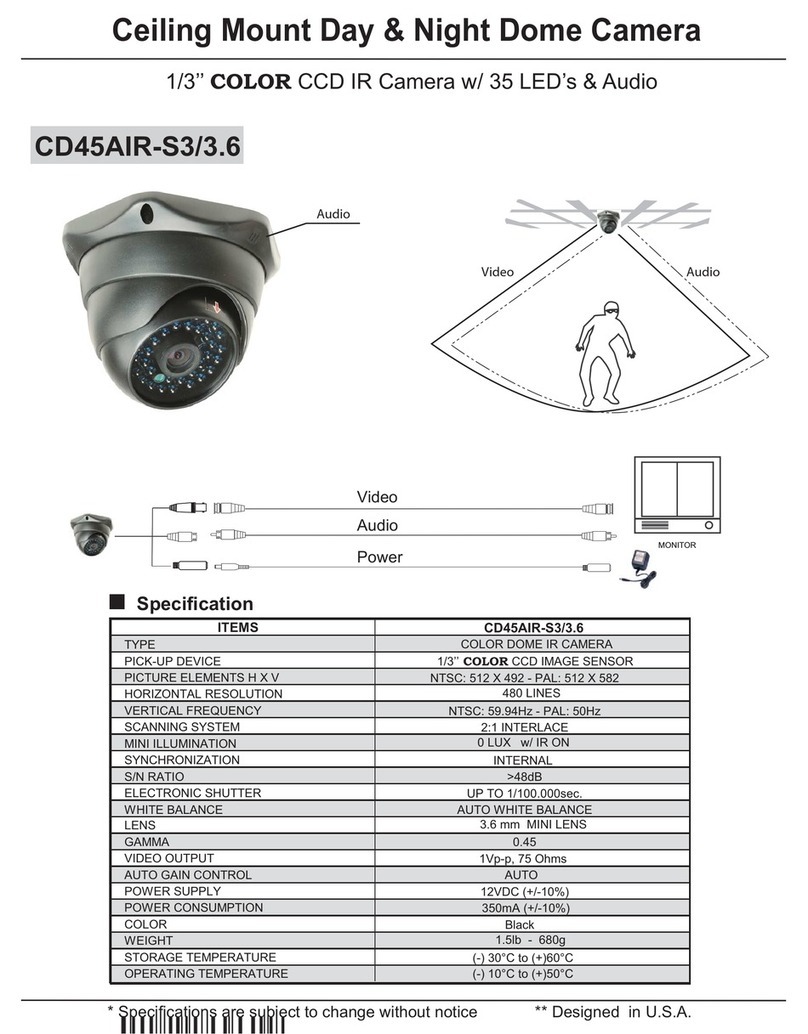4
3.
While it is true that a smaller iris opening often means sharper images, too small an opening may blur an
image due to an optical eect called diraction. This problem can be seen in bright outdoor situations
when a camera closes the iris too much and light is diracted or spread over many pixels. The smaller
each pixel is on an image sensor, the more of a problem diraction becomes as the diracted light
aects more pixels. This can typically happen in cameras that use an automatic DC-iris lens in combina-
tion especially with megapixel sensors that have small pixels. (While a megapixel sensor has more pixels
than a standard VGA 640x480 image sensor, the size of each pixel on a megapixel sensor is often
smaller than the size of each pixel on a VGA image sensor.)
Fig. 2 This illustration is an example of the depth of eld for dierent size iris openings, expressed as f-numbers. A smaller iris open-
ing, that is a larger f-number, enables objects to be in focus over a longer range. Depending on the sensor’s pixel size, very small
openings may cause image blur (diraction).
Existing lens options
Until the introduction of P-Iris, the types of iris control on lens options for xed surveillance cameras
have been xed, manual and automatic. Fixed iris lenses have no ability to adjust the iris opening. With
manual iris lenses, the iris opening must be adjusted by hand. Auto-iris lenses, either DC iris or video iris,
automatically adjust the iris opening in response to changes in light levels.
For indoor applications where light levels are constant, xed or manual iris lenses may be suitable since
there is no need to constantly adjust the iris opening.
In situations with varying light levels, for example, outdoor camera installations, the preferred lens option
is an automatically adjustable iris. This is commonly a DC-iris lens. A DC-iris lens responds only to light
levels and does not take into account the impact of the iris opening on other image qualities such as depth
of eld. With a DC-iris lens, the camera only knows if the iris opens or closes in response to the level of
light; it doesn’t provide the camera with information about the position of the iris. Without this informa-
tion, the camera is not able to eectively steer the iris opening in order to optimize image quality. This is a
drawback that P-Iris is designed to overcome.
How P-Iris works
P-Iris is a new type of iris control that is both automatic and precise. Unlike a DC-iris lens, the main task
of the P-Iris control is not to continuously adjust the ow of light through the lens. The primary objective
of P-Iris is to improve image quality by enabling the optimal iris position to be set so that the central and
best-performing part of the lens is used most of the time. This position, expressed as a specic f-number,
is where the lens performs optimally, where many optical errors are reduced, and where image quality
(with regards to contrast, resolution and depth of eld) is at its best. This is the default setting in a net-
work camera with P-Iris.
4.
